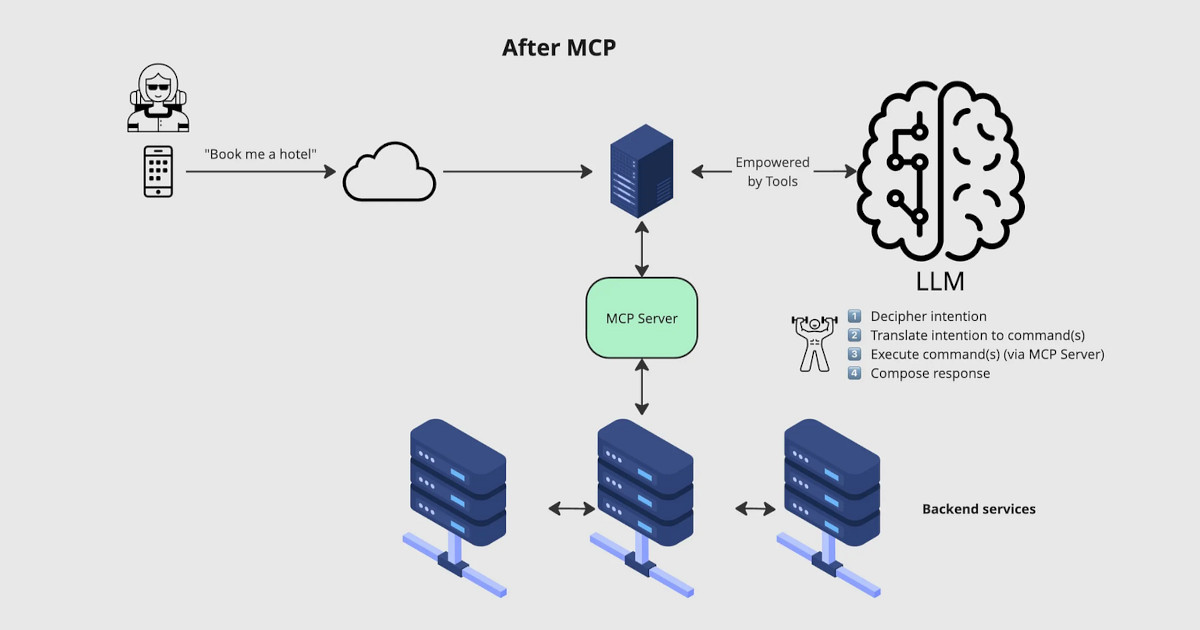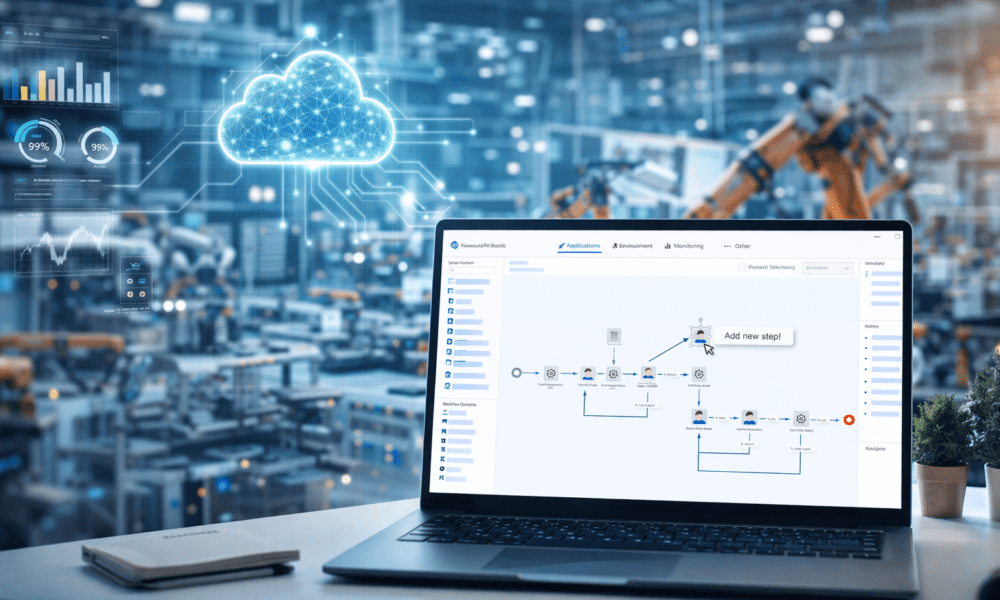A fundamental shift in enterprise software architecture is emerging as AI agents transition from assistive tools to operational execution engines, with traditional application backends retreating to governance and permission management roles. This transformation is accelerating across banking, healthcare, and retail systems, with 40% of enterprise applications expected to include autonomous agents by 2026.
Rafael Torres, Senior Software Development Architect at Expedia Group, recently noted this architectural evolution, explaining how agents now directly invoke services and orchestrate workflows through protocols like the Model Context Protocol (MCP) rather than generating suggestions for backends to execute.
LLMs orchestrate complete workflows using MCP (source)
The architectural shift appears across production systems. In traditional architectures, even when Large Language Models (LLMs) assist with user intent recognition, backend systems interpret that intent and orchestrate API calls to execute actions. Torres explains that with MCP providing agents structured access to databases, APIs, and runtime environments, “the LLM is no longer just generating intent—it’s acting on it.”
The backend becomes governance-focused, while agents become operational logic engines that perform real CRUD operations, manage transactions, and coordinate across services. Torres positions MCP as analogous to HTTP for the web, calling it “the universal protocol for interaction between intelligent agents and software systems.”
Enterprise adoption of AI Agents accelerated dramatically in 2025. Gartner predicted in August that 40% of enterprise applications will include integrated task-specific agents by 2026, up from less than 5% today. IDC research in April found that over 80% of companies believe “AI agents are the new enterprise apps,” and that organizations are reconsidering traditional packaged software investments. Futurum Research reported that agent-based AI will drive up to $6 trillion in economic value by 2028.

Gartner’s prediction for the future of Agentic AI in enterprise applications (source)
Real production deployments demonstrate the scope of the shift. Bain documented a South American bank deploying agents that process PIX payments through WhatsApp, with customers sending photos or text descriptions that agents interpret, confirm, and execute autonomously. JPMorgan Chase deployed its EVEE Intelligent Q&A system across call centers, where agents equipped with AI assistance receive instant, context-aware responses by querying an interface integrated with policy documents and transaction histories, reducing handling times and enabling reallocation of resources to proactive client outreach.
The transformation extends beyond finance: Mass General Brigham deployed ambient documentation agents across 800 physicians that autonomously draft clinical notes from patient conversations, with 60% of providers reporting an increased likelihood of extending their clinical careers and 80% spending more time engaging with patients.
BCG analysis in October noted that “AI doesn’t just automate workflows—it transforms them,” with enterprises moving from AI-augmented workflows toward AI-orchestrated execution featuring autonomously managed operations and real-time adaptation.
This shift forces enterprise architects to confront new design patterns to enable Agentic AI orchestration. InfoQ’s article on Agentic AI Architecture Framework for Enterprises emphasizes that successful agentic deployments progress through three distinct tiers where trust, governance, and transparency must precede autonomy.

Enterprise Agentic AI Architecture Three-Tier Framework (source)
The Foundation Tier establishes tool orchestration, transparency in reasoning, and data lifecycle patterns to build organizational trust. The Workflow Tier delivers automation through five core patterns: Prompt Chaining, Routing, Parallelization, Evaluator-Optimizer, and Orchestrator-Workers. The Autonomous Tier enables agents to determine their own approaches and tool usage dynamically.
The framework stresses that organizations successfully deploying agentic systems prioritize simple, composable architectures over complex frameworks, effectively managing complexity while controlling costs and maintaining performance standards.
Critical capabilities include embedded observability for monitoring agent behavior, security controls with audit trails, and cost discipline to prevent runaway resource consumption—all built into the architecture from inception rather than retrofitted after deployment.










